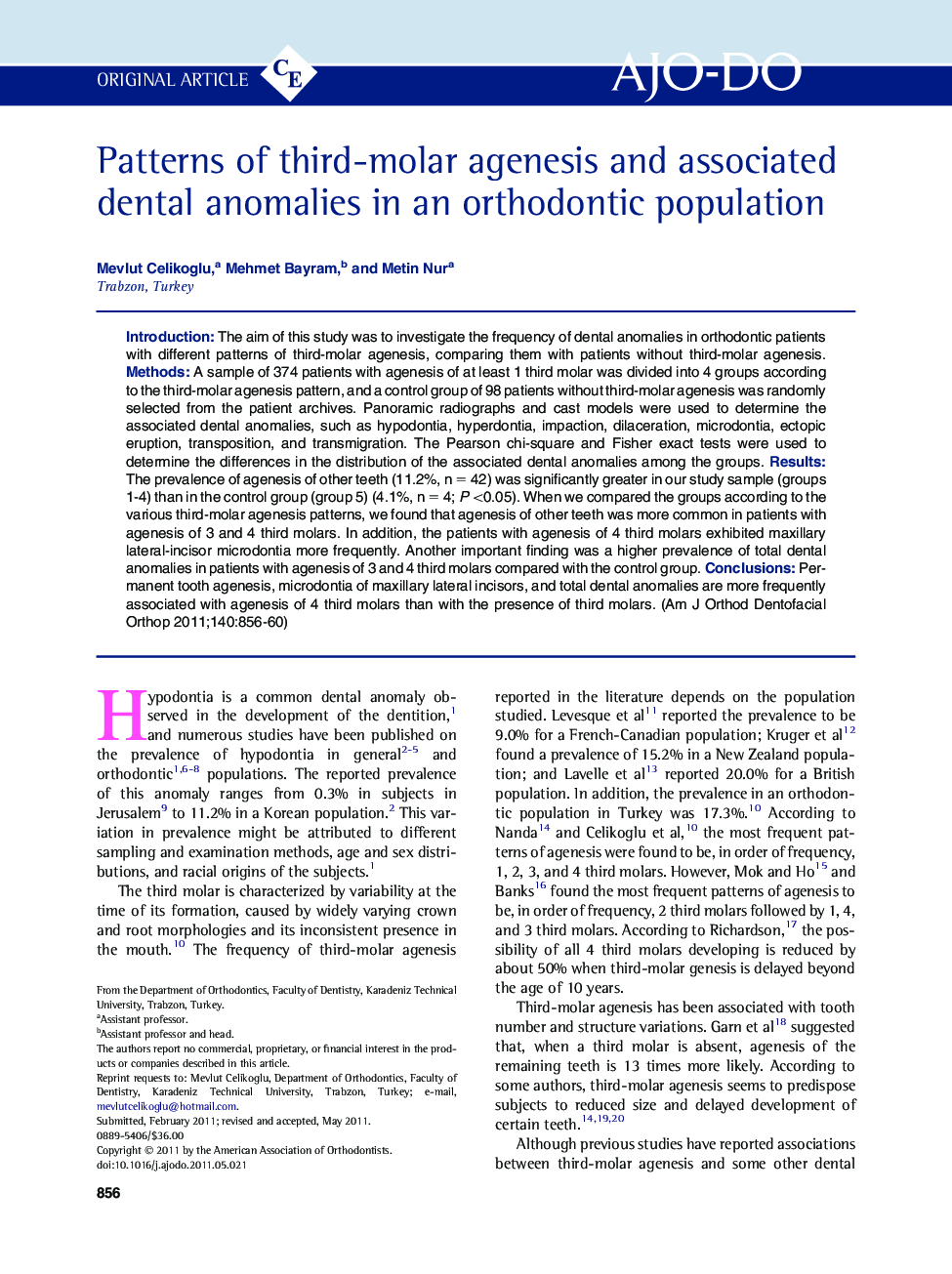| Article ID | Journal | Published Year | Pages | File Type |
|---|---|---|---|---|
| 3117176 | American Journal of Orthodontics and Dentofacial Orthopedics | 2011 | 5 Pages |
IntroductionThe aim of this study was to investigate the frequency of dental anomalies in orthodontic patients with different patterns of third-molar agenesis, comparing them with patients without third-molar agenesis.MethodsA sample of 374 patients with agenesis of at least 1 third molar was divided into 4 groups according to the third-molar agenesis pattern, and a control group of 98 patients without third-molar agenesis was randomly selected from the patient archives. Panoramic radiographs and cast models were used to determine the associated dental anomalies, such as hypodontia, hyperdontia, impaction, dilaceration, microdontia, ectopic eruption, transposition, and transmigration. The Pearson chi-square and Fisher exact tests were used to determine the differences in the distribution of the associated dental anomalies among the groups.ResultsThe prevalence of agenesis of other teeth (11.2%, n = 42) was significantly greater in our study sample (groups 1-4) than in the control group (group 5) (4.1%, n = 4; P <0.05). When we compared the groups according to the various third-molar agenesis patterns, we found that agenesis of other teeth was more common in patients with agenesis of 3 and 4 third molars. In addition, the patients with agenesis of 4 third molars exhibited maxillary lateral-incisor microdontia more frequently. Another important finding was a higher prevalence of total dental anomalies in patients with agenesis of 3 and 4 third molars compared with the control group.ConclusionsPermanent tooth agenesis, microdontia of maxillary lateral incisors, and total dental anomalies are more frequently associated with agenesis of 4 third molars than with the presence of third molars.
